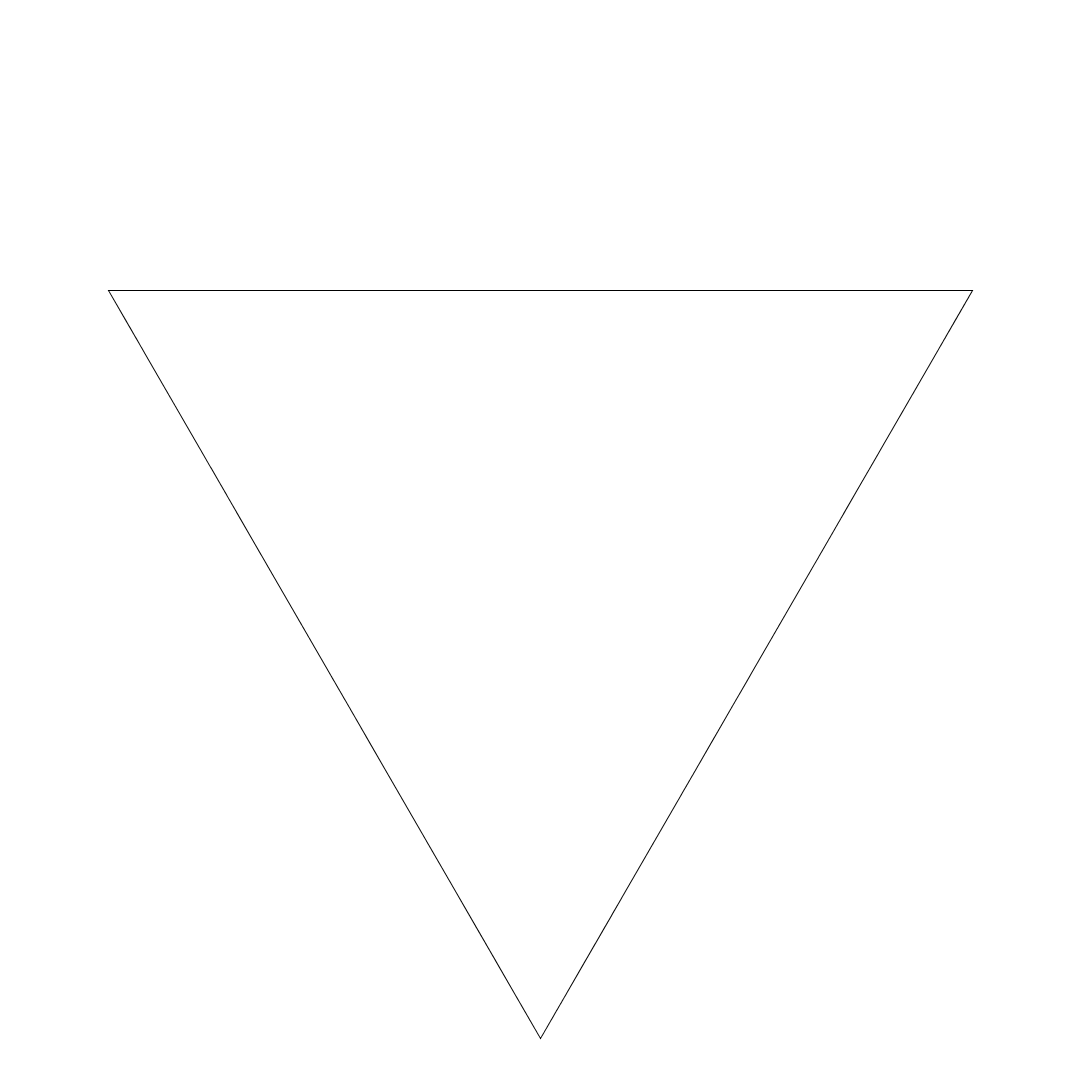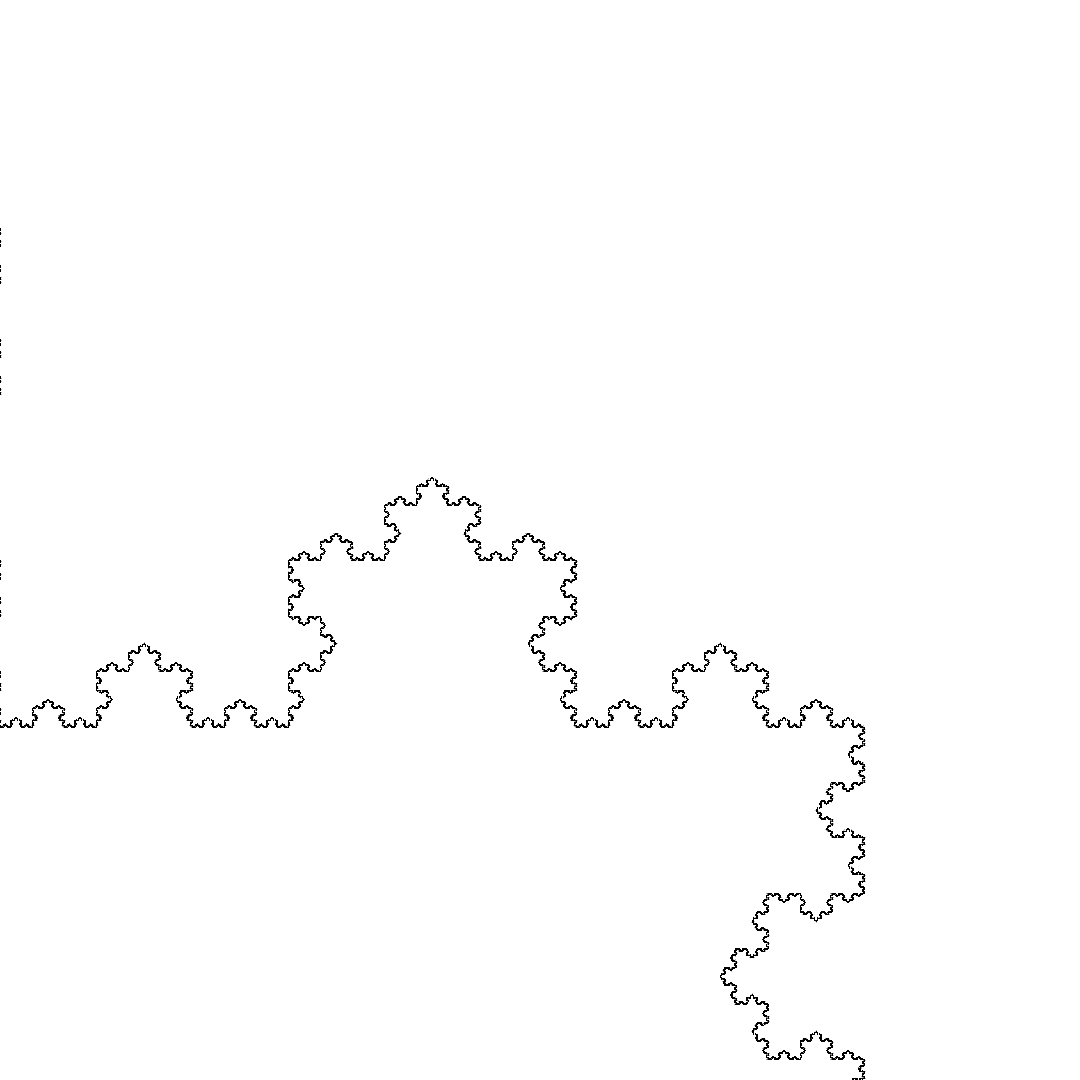To understand one of the applications of complex numbers and its significance, we first need to have a basic understanding of fractals.
Fracals

Let's start by looking at the picture to the right. The pattern starts with a basic line. Then we break that line at he midpoint and create two lines. The two lines can be described as two sides of an equilateral triangle. The third line, the base of the equilateral triangle, is not drawn. This creates four lines, where, in the stage before there was only one line.
Now, looking at the second row we have four lines. To continue this same pattern, we do the same thing we did above. This time we simply have more lines to do it with. As we see, moving from row two to row three results in eight more lines. In row three, we now have a total of sixteen lines to continue the pattern.
In the image the pattern repeats for rows four and five. Each row results in more lines. However, it doesn't have to stop there. In theory the pattern continues forever. Mathematically, this creates an infinitely long line.

Instead of starting this pattern with a line, we can start it with an equilateral triangle. An animated picture of this is located to the left. It starts with an equilateral triangle and shows what the first few iterations look like.
This is called the Koch Snowflake

The Koch Snowflake has a unique property. It is created using a simple pattern, iterated over and over. Therefore, no matter where you look or how much you zoom in, you will see the same pattern over and over. In other words, it is created to be a never ending pattern. Never ending patterns, like this, are called fractals.
One of the most recognized fractals is known as The Mandelbrot Set.
The Mandelbrot Set
The Mandelbrot Set is created using a simple equation repeated over and over. In other words, it is the iteration of an equation. Let's start with a simple example on the real number line. We will start with the numbers 0-5. The equation we will use is zn= zn-12. First, I will state that z1 = 0. The first few iterations are as follows: z2 = 0, z3 = 0, z4 = 0, and so on. Of course squaring the number 0 will always give the result 0. The number 1 is very similar. If z1 = 1 then we will get similar results: z2 = 1, z3 = 1, z4 = 1, and so on. This is because no matter how many times you multiply 1 by its self, the result is always 1. The numbers zero and one are examples of the first possible outcome of this equation under this iteration: the result is bounded. This means that no matter how many times you do iterate it, the solution will always have a finite limit.
Now, let's say z1 = 2. The first few iterations are as follows: z1 = 2, z2 = 4, z3 = 16, z4 = 256, z5 = 65,536, and so on. In the case where z1 = 2, the iteration results in a number that gets large very quickly. Now, let's say z1 = 3. The first few iterations are as follows: z1 = 3, z2 = 9, z3 = 81, z4 = 6,561, and so on. Now, let's say z1 = 4. The first few iterations are as follows: z1 = 4, z2 = 16, z3 = 256, and so on. Our last example is z1 = 5. The first few iterations are as follows: z1 = 5, z2 = 25, z3 = 625, and so on. These are examples of the second possible outcome of this equation under iteration: the result goes to infinity. This means that with many iterations the number will just get larger and larger until it is uncountable.
What is interesting to note is the differences in the four examples of second possible outcome. After the first iteration for the starting points four and five most people would need a calculator. However, starting with the numbers two or three the average person is more likely to make it to the second iteration before needing a calculator. Thus we see that these numbers get bigger at different rates. This idea is crucial to understanding The Mandelbrot Set.
The equation of The Mandelbrot set is slightly more complicated. The equation is:
zn= zn-12 + c , z1 = 0

The last piece of the puzzle you need in order to understand The Mandelbrot set is that it exists on the complex plane. So far we have only been working on the real number line. What makes the complex plane so interesting is that it brings another dimension.
Complex numbers have two parts: they have a real part and an imaginary part. Thus, graphically we represent a complex number as a two dimensional number. In the picture to the right we see that A is a two dimensional number.
The Mandelbrot equation on the complex plane has the same two possible outcomes:
Under iteration the result is either bounded (Stable), or it goes to infinity (Unstable).
To summarize, The Mandelbrot Set is created by the iteration of the equation zn= zn-12 + c. In The Mandelbrot Set, z1 is always equal to 0. Under iteration the result behaves one of two ways. It either is bounded (in other words: stable) or it goes to infinity (meaning unstable.) The Mandelbrot set exists on the complex plane, using two dimensional numbers. By hand all of these new factors are hard to visualize. To further explore what is Stable and Unstable on the complex plane iterating the Mandelbrot equation click the button below. This will take you to a Geogebra applet that calculates the first 200 iterations of the Mandelbrot equation for any value of c. Notice how the patterns relate to the image of the Mandelbrot set.
Exploring Stability
Exploring The Mandelbrot Set

If you still are not impressed with what you have found in the applets, click on the image to the right. This is a link to a video that zooms in on The Mandelbrot Set for over five minutes. It is calculated using 750 million iterations!
What is the Significance?
Mandelbrot famously wrote: "Clouds are not spheres, mountains are not cones, coastlines are not circles, and bark is not smooth, nor does lightning travel in a straight line."
For a long time people only studied regular shapes like spheres, cones and circles. However, there are so many things that can't be described with these basic shapes. Fractals are what connects the simple to the chaos. Fractals give us a way to explain and study irregular, chaotic things. Fractals are a way to model what we could never model before. It is a new mathematical way to study the world. With fractals we can measure coastlines more accurately, we can mathematically create realistic virtual realities, we can begin to understand the common irregular things in the world around us.
Fractals found in Nature





































